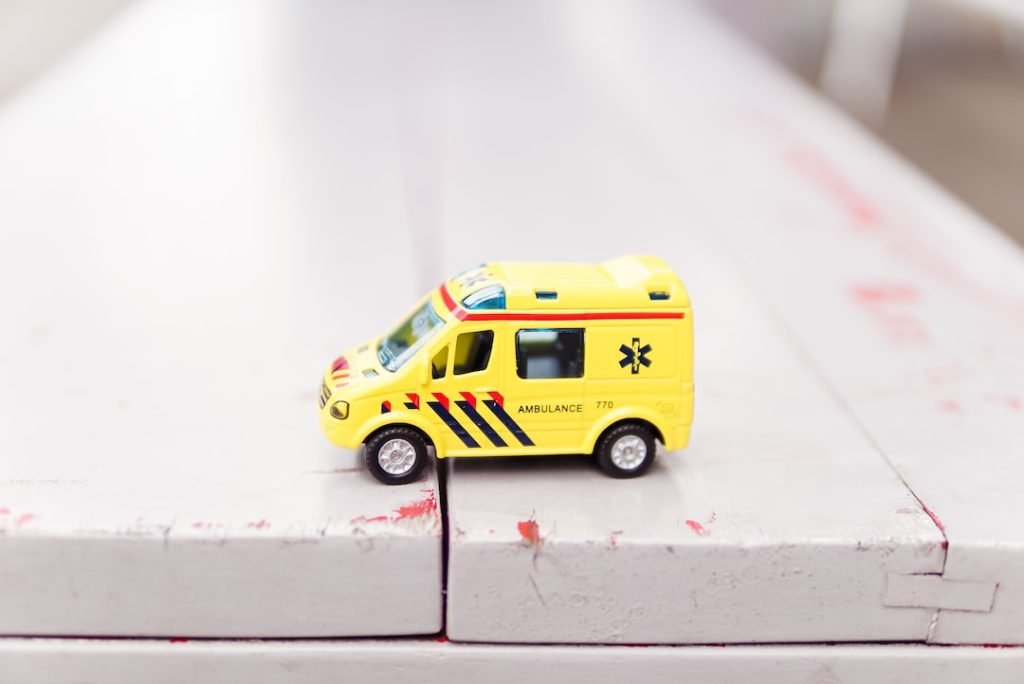

Medical Spanish: Essential Spanish Vocabulary for Healthcare Workers
In today’s diverse society, the need for healthcare workers who can effectively communicate with patients from different cultural backgrounds is more important than ever. One language that is particularly crucial for healthcare professionals to learn is Spanish. With the growing number of Spanish-speaking patients seeking medical care, being able to speak Medical Spanish can greatly enhance the quality of care provided and improve patient outcomes.
The benefits of being able to speak Medical Spanish in the healthcare industry are numerous. Firstly, it allows healthcare workers to establish a stronger rapport with their patients. When patients are able to communicate with their healthcare providers in their native language, they feel more comfortable and are more likely to trust and comply with their treatment plans. This can lead to better patient satisfaction and improved health outcomes.
Additionally, being able to speak Medical Spanish can help healthcare workers provide more accurate diagnoses and treatment plans. Language barriers can often lead to misunderstandings and miscommunications, which can have serious consequences in a medical setting. By speaking the same language as their patients, healthcare professionals can ensure that important information is accurately conveyed and understood.
Table of Contents
ToggleBasic Spanish Vocabulary for Patient Communication
To effectively communicate with Spanish-speaking patients, healthcare workers should have a basic understanding of Spanish vocabulary for patient communication. This includes greetings and introductions, asking and answering basic questions, and using common phrases that are commonly used in patient interactions.
When greeting a patient, it is important to use appropriate greetings such as “Hola” (Hello) or “Buenos días” (Good morning). Introducing oneself as a healthcare provider can be done by saying “Soy [name], su médico/enfermero” (I am [name], your doctor/nurse).
Asking and answering basic questions is essential for gathering information about the patient’s symptoms and medical history. Some common questions include “¿Cuál es el problema?” (What is the problem?), “¿Dónde le duele?” (Where does it hurt?), and “¿Tiene alguna alergia?” (Do you have any allergies?). Patients may respond with phrases such as “Me duele la cabeza” (I have a headache) or “No tengo alergias” (I don’t have any allergies).
Medical Terminology in Spanish: Common Terms and Phrases
In addition to basic patient communication, healthcare workers should also familiarize themselves with medical terminology in Spanish. This includes anatomy and physiology terms, medical conditions and diseases, and diagnostic tests and procedures.
Anatomy and physiology terms are essential for describing the human body and its functions. Some common terms include “corazón” (heart), “pulmones” (lungs), and “hígado” (liver). Medical conditions and diseases can be described using phrases such as “diabetes” (diabetes), “hipertensión” (hypertension), and “cáncer” (cancer). Diagnostic tests and procedures can be referred to using terms like “radiografía” (x-ray), “tomografía computarizada” (CT scan), and “cirugía” (surgery).
Spanish Vocabulary for Physical Examinations and Assessments
When conducting physical exams, healthcare workers should be familiar with vocabulary related to the examination process, describing symptoms and pain, and taking vital signs.
Vocabulary for conducting physical exams includes phrases such as “Abrir la boca” (Open your mouth), “Respirar profundamente” (Take a deep breath), and “Levantar el brazo” (Raise your arm). Describing symptoms and pain can be done using phrases like “Tengo fiebre” (I have a fever), “Me duele el estómago” (My stomach hurts), and “Siento mareos” (I feel dizzy). Taking vital signs can be communicated by saying “Tomar la presión arterial” (Take blood pressure), “Tomar la temperatura” (Take temperature), and “Contar los latidos del corazón” (Count heartbeats).
Emergency Situations: Essential Spanish Vocabulary for Healthcare Workers
In emergency situations, being able to communicate effectively with Spanish-speaking patients is crucial. Healthcare workers should be familiar with vocabulary related to emergency situations, communicating with patients during emergencies, and giving instructions and directions in Spanish.
Vocabulary for emergency situations includes phrases such as “¡Llame a una ambulancia!” (Call an ambulance!), “¡Necesito ayuda médica!” (I need medical help!), and “¡Está teniendo un ataque al corazón!” (He/she is having a heart attack!). Communicating with patients during emergencies can be done by using phrases like “Manténgase tranquilo/a” (Stay calm), “Respire profundamente” (Breathe deeply), and “No se mueva” (Don’t move). Giving instructions and directions in Spanish can be done by saying “Ponga su brazo aquí” (Put your arm here), “Abra la boca” (Open your mouth), and “Siga mis instrucciones” (Follow my instructions).
Spanish Vocabulary for Prescription Medications and Dosages

When it comes to prescription medications, healthcare workers should be able to communicate with patients about their medications, dosage instructions, and any warnings or side effects.
Vocabulary for prescription medications includes phrases such as “medicamento” (medication), “receta” (prescription), and “pastilla” (pill). Dosage instructions can be communicated by saying phrases like “Tomar una vez al día” (Take once a day), “Tomar con comida” (Take with food), and “No exceder la dosis recomendada” (Do not exceed the recommended dose). Communicating with patients about their medications can be done by asking questions like “¿Está tomando algún otro medicamento?” (Are you taking any other medications?), “¿Ha experimentado algún efecto secundario?” (Have you experienced any side effects?), and “¿Tiene alguna alergia a medicamentos?” (Do you have any medication allergies?).
Cultural Considerations: Navigating Language Barriers in Healthcare
When working with Spanish-speaking patients, it is important for healthcare workers to understand and respect cultural differences in healthcare. Strategies for overcoming language barriers include using professional interpreters, utilizing translation services, and using visual aids or gestures to enhance communication.
Building trust with Spanish-speaking patients is crucial for effective healthcare delivery. This can be achieved by showing respect for their culture, beliefs, and values. Healthcare workers should also take the time to explain procedures, treatments, and medications in a way that is culturally sensitive and easily understood.
Spanish Vocabulary for Medical Procedures and Tests
Healthcare workers should be familiar with vocabulary related to medical procedures and tests in order to effectively communicate with Spanish-speaking patients about these topics.
Vocabulary for medical procedures and tests includes phrases such as “cirugía” (surgery), “anestesia” (anesthesia), and “biopsia” (biopsy). Communicating with patients about procedures and tests can be done by explaining the purpose and process of the procedure or test using simple language and visual aids if necessary.
Spanish Vocabulary for Mental Health and Behavioral Health
In the field of mental health and behavioral health, healthcare workers should be able to communicate with Spanish-speaking patients about mental health issues, treatment options, and available resources.
Vocabulary for mental health and behavioral health includes phrases such as “depresión” (depression), “ansiedad” (anxiety), and “terapia” (therapy). Communicating with patients about mental health issues can be done by asking questions like “¿Cómo se siente emocionalmente?” (How do you feel emotionally?), “¿Ha tenido pensamientos suicidas?” (Have you had suicidal thoughts?), and “¿Ha buscado ayuda profesional?” (Have you sought professional help?). Describing treatment options and resources can be done by using phrases like “terapia individual” (individual therapy), “medicación” (medication), and “apoyo de grupo” (group support).
Resources for Learning Medical Spanish: Books, Courses, and Apps
There are numerous resources available for healthcare workers who are interested in learning Medical Spanish. Recommended books for learning Medical Spanish include “Medical Spanish Made Incredibly Easy!” by Springhouse and “Spanish for Health Care Professionals” by William C. Harvey. Online courses and programs for Medical Spanish are offered by organizations such as the American Medical Association and the University of California, San Diego Extension. Medical Spanish apps for healthcare workers include Medscape’s “Medical Spanish” app and Canopy’s “Canopy Speak” app.
Conclusion
In conclusion, the ability to speak Medical Spanish is becoming increasingly important in the healthcare industry. Healthcare workers who can communicate effectively with Spanish-speaking patients have the opportunity to provide better care, establish stronger relationships, and improve patient outcomes. By familiarizing themselves with basic Spanish vocabulary for patient communication, medical terminology, physical examinations, emergency situations, prescription medications, medical procedures, mental health, and behavioral health, healthcare workers can enhance their ability to provide culturally sensitive and effective care to Spanish-speaking patients. There are a variety of resources available for healthcare workers to learn Medical Spanish, including books, courses, and apps. Continued learning and practice of Medical Spanish is encouraged to further improve communication and patient care.
If you want to learn Spanish, you can register for classes here. We look forward to hearing from you and helping you become fluent in Spanish!
If you want to learn Norwegian, you can register for classes here. We look forward to hearing from you and helping you become fluent in Norwegian.





